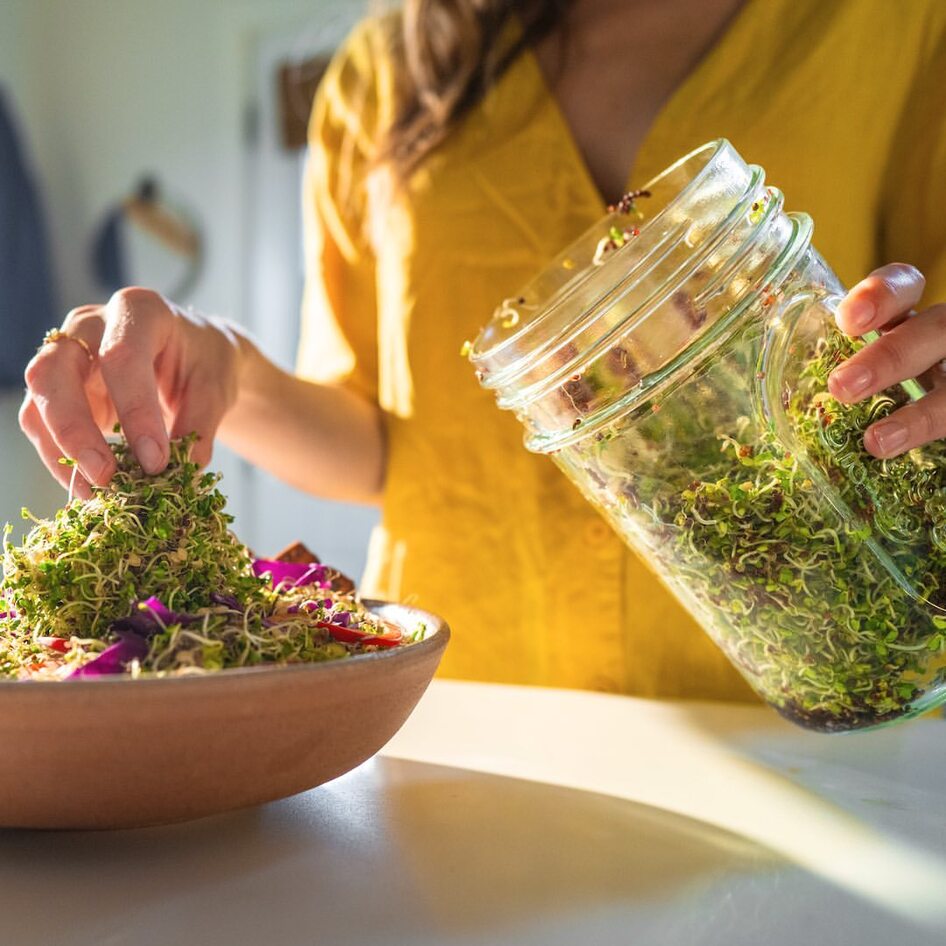5 Easy Ways to Make Your Home More Eco-Friendly
From city studios to country bungalows, green your abode with these practical and stylish eco-friendly tips.
May 5, 2016
This year, don’t limit seasonal deep cleaning to performing a decades-late wardrobe overhaul or giving that bathroom a half-hearted scrub. Instead, make a real commitment to cleaner living by making your home more eco-friendly. Once you’ve banished animal products from your kitchen-a major green step-branch out into the rest of your home!
Lay It Down
When it comes to eco-friendly interior changes, a great place to begin is by playing striptease with your carpeting. Yes, if you still have carpeting covering your floors, now is the time to take it all off. Milan Vasic, producer for the television show Extreme Makeover: Home Edition, recommends ripping out carpet because it traps mold, mildew, and bacteria in your living space. Many homes have gorgeous wood floors hiding underneath all that ‘70s shag, and the wood can be easily repurposed to showcase its timeless style. If hidden hardwood doesn’t exist, replace carpeting with low-impact materials such as bamboo, cork, or recycled wood.
Get Splashy
All you need is the air you breathe, right? Many household paints contain volatile organic compounds (VOCs) that pollute indoor air quality and cause short- and long-term health problems. There are federal limits restricting the amount of VOCs in paints, but to reduce the threat choose a low- or zero-VOC paint. Both Olympic Premium and Benjamin Moore Aura paints have low- to zero-VOC levels and are widely available at hardware stores. Not terribly concerned about the color of your new, eco-friendly walls? Earn extra sustainability points by buying “oops” low or zero-VOC paint-yes, the stuff that was mixed and rejected by a previous, much less eco-aware hardware store customer. While the color may be a mystery-err, happy surprise-the low environmental impact is guaranteed to be a homerun.
Sofa King Green
Ready for the ultimate eco-friendly furniture makeover? Before throwing cash at a fancy furniture store, take a closer look at your own living room. Repurposing old furniture into something new means working outside the consumerist cycle and not extracting new resources from the earth. Family heirlooms and tried-and-true room furnishings take on an entirely new aesthetic when recycled, whether repainted, resurfaced, or reupholstered. After all, saving a bit of money and more than a few trees means you can splurge on a fancy, organic cotton throw to drape over you newly reupholstered vintage Chesterfield.
Newly Minted
There are a host of animal-derived materials such as leather, wool, and silk that are often used in furniture production. Check out the cruelty-free counterparts available at Herman Miller, Knoll, Steelcase, or Crate and Barrel, all of which produce options made with recycled and sustainable materials. For a listing of certified green furniture companies, consult the Greenguard Environmental Institute, a non-profit group that offers a list of certified low-emitting products.
The Big Finish
The most dramatic changes to make when creating a more sustainable home involve construction. Before investing in a hardhat and bullhorn, consult local government officials for building codes, and research what kind of LEED (Leadership in Energy and Environmental Design) certified changes could be made. The LEED system, created by the United States Green Building Council, is a point-based method of setting standards for environmentally sustainable construction. Home improvements under LEED include using raw building materials and opting for sustainable replacements, such as bamboo or cork, and reaching maximum levels of water and energy efficiency by reducing consumption and buying low-impact appliances.
JUMP TO ... Latest News | Recipes | Guides | Health | Subscribe







